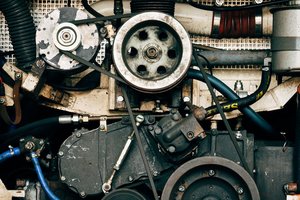🔧 Understanding EDM: How It Works and Why It Matters
Electrical Discharge Machining (EDM) is a non-traditional machining process that uses electrical sparks to shape hard metals with extreme precision. Unlike conventional cutting methods, EDM doesn’t rely on mechanical force, making it ideal for:
– Hardened materials (e.g., titanium, Inconel, carbide)
– Complex geometries (thin walls, intricate cavities)
– High-precision components (medical devices, aerospace parts)
Key Takeaway: EDM excels where traditional machining falls short, but its success depends on careful parameter control and tooling selection.
⚡ Challenges in EDM and How to Overcome Them
1. Electrode Wear and Cost
EDM relies on electrodes (typically graphite or copper) that erode during machining. Excessive wear leads to:
– Higher tooling costs
– Dimensional inaccuracies
✅ Solutions:
– Use wear-resistant electrodes (e.g., copper-tungsten for fine details).
– Optimize spark frequency and current settings to balance speed and electrode life.
2. Surface Finish and Recast Layer
EDM can leave a heat-affected “recast layer,” which may require secondary finishing.
✅ Solutions:
– Apply multiple skim passes with reduced power for smoother finishes.
– Consider adaptive EDM technologies that adjust parameters in real time.
3. Slow Material Removal Rates (MRR)
Compared to milling or turning, EDM is slower—especially for large volumes.
✅ Solutions:
– Combine roughing and finishing electrodes to speed up the process.
– Use high-speed EDM drills for small, deep holes.

📊 Optimizing EDM Parameters for Peak Performance

Fine-tuning these variables is critical for efficiency:
| Parameter | Impact | Optimal Range |
|---|---|---|
| Pulse Duration | Affects MRR and surface finish | 2–2000 µs (varies by material) |
| Current | Higher current = faster but rougher | 1–50 A |
| Dielectric Fluid | Cools and flushes debris | Deionized water or oil |
Pro Tip: Conduct test runs with small sections to dial in settings before full-scale production.
🚀 Advanced EDM Techniques for Competitive Edge
1. Wire EDM (WEDM) for Complex Cuts
- Uses a thin, electrically charged wire to cut intricate shapes.
- Ideal for prototyping, tooling, and precision gears.
2. Sinker EDM for Deep Cavities
- Best for 3D molds, dies, and textured surfaces.
- Requires custom-shaped electrodes.
3. Micro-EDM for Ultra-Fine Details
- Achieves tolerances under 5 microns.
- Used in medical implants and microelectronics.
🔧 Best Practices for Reliable EDM Operations
- Maintain Clean Dielectric Fluid – Contaminants cause erratic sparks.
- Secure Workpiece Properly – Vibration leads to inaccuracies.
- Monitor Electrode Condition – Replace before excessive wear impacts quality.
- Leverage Automation – CNC-controlled EDM reduces human error.
💡 Final Thoughts: Elevate Your EDM Process
EDM is a powerful tool for manufacturers tackling tough materials and tight tolerances. By understanding its challenges—electrode wear, surface finish, and speed—you can implement smarter strategies to boost productivity and cut costs.
Ready to refine your EDM approach? Partner with experts or invest in advanced machinery to stay ahead in precision manufacturing.
By integrating these insights, your team can harness EDM’s full potential—delivering high-quality parts efficiently and competitively. 🛠️
